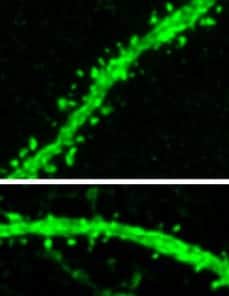Neurons are a limited commodity; each of us goes through life with essentially the same set we had at birth. But these cells, whose electrical signals drive our thoughts, perceptions, and actions, are anything but static. They change and adapt in response to experience throughout our lifetimes, a process better known as learning.
Research conducted at The Rockefeller University and collaborating institutions has uncovered a new mechanism that makes this plasticity possible. This discovery centers on a specific type of histone, proteins that support DNA and help control its expression.
“Histones and their modifications can play an important role in switching genes on and off — a type of epigenetic control. This research uncovers an epigenetic mechanism, involving one slightly-modified, “variant” histone, that makes learning possible by facilitating the genetic changes necessary for neurons to form connections,” says study author C. David Allis, Joy and Jack Fishman Professor and head of the Laboratory of Chromatin Biology and Epigenetics. This research was published in Neuron on July 1.
Histones are proteins that act as spools to DNA’s thread, giving the genetic code support, structure, and protection. Five major types of histone, including one called H3, are known, and researchers have become interested in the function of variants of these histones, which are often very similar to their standard counterparts. This new research focused on one such variant, H3.3, which closely resembles its main H3 counterpart.
In a series of experiments using a wide variety of techniques, first author Ian Maze, a former postdoc in Allis’s lab and now an assistant professor at Icahn School of Medicine at Mount Sinai, and his colleagues linked plasticity and, as a result, learning with the destruction and replacement of H3.3 within the neurons of the hippocampus, a region of the brain associated with memory, among other things.
They began by looking at histones within the brains of mice and postmortem samples from humans. In both cases, they found levels of H3.3 increasing with age and finally coming to dominate. By feeding the animals food containing a chemical label, and following the decay of a radioactive signal naturally found in the human brain samples, the researchers determined that, rather than remaining in place on DNA throughout life, H3.3 is constantly recycled, with new H3.3 proteins replacing old ones, a process that slows down with age.
Next, they wanted to know what these changes meant. In cell culture, they linked H3.3 turnover with increased neural activity, and then in mice, they found that a mentally stimulating environment — for mice this means a running wheel, toys, and plenty of space, among other things — produced increased turnover of H3.3 in the hippocampus. These results suggested a link between H3.3 recycling and neuronal plasticity. When the researchers looked to gene expression, they found that following stimulation of a neuron, the expression of certain genes increased. The same genes turned out to be necessary for forming synapses, and they were accompanied by significant amounts of H3.3.
Their results so far led them to suspect a connection between H3.3 recycling and learning, by way of synapse formation. They then tested this hypothesis.
“When we put an end to histone turnover in adult mice, we found it disrupted normal gene expression patterns associated with plasticity, and as a result, impaired the animals’ ability to learn new things. For instance, they had difficulty distinguishing objects they had previously encountered from new ones,” Maze says. “Because some psychiatric diseases, such as schizophrenia, are associated with deficits in synapses, it would be interesting to investigate whether or not histone turnover is involved.”
In additional experiments, the researchers reduced histone turnover in embryonic stem cells, which have the potential to become any type of cell in an organism, with little effect. However, reducing turnover did alter gene expression in glial cells, other brain cells involved in supporting neurons. However, turnover affected a different set of genes for glial cells and astrocytes than in the neurons.
“It appears the turnover of H3.3 may have implications beyond neurons, as a means for controlling plasticity in adult cells that have a set identity, but still must respond to their environment,” says Allis, who is also a Tri-Institutional Professor. “Our experiments suggest this is the case for cells within the nervous system, and we suspect the same may be true elsewhere in the body.”


